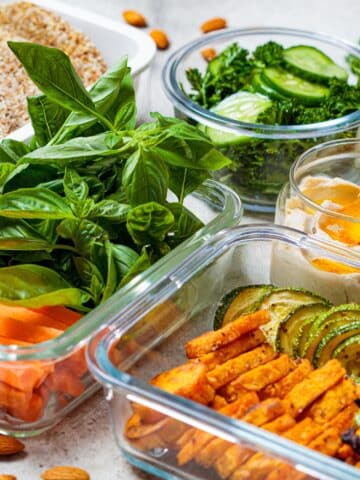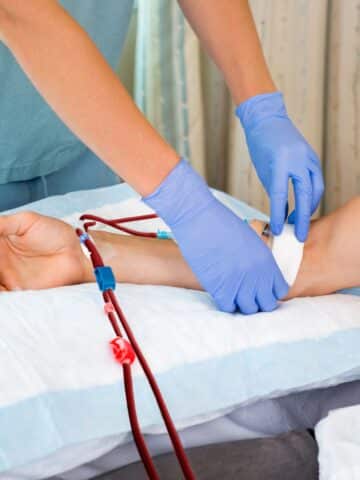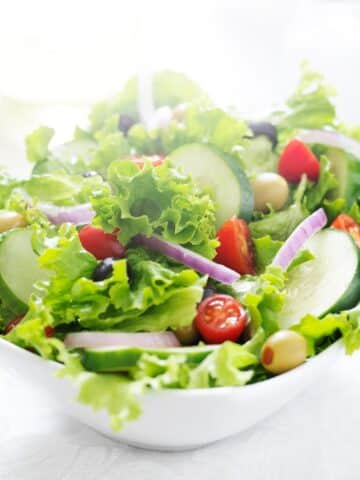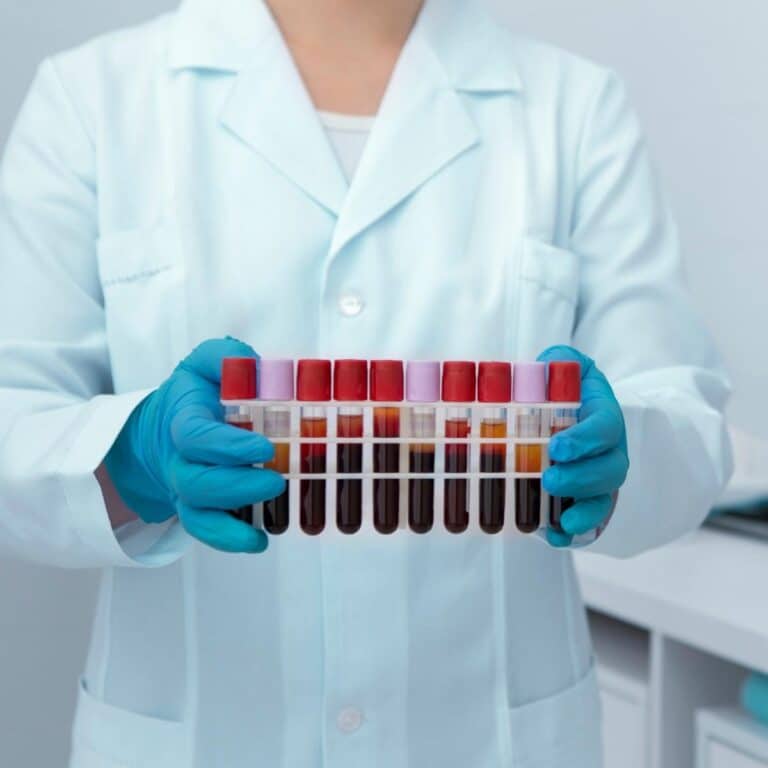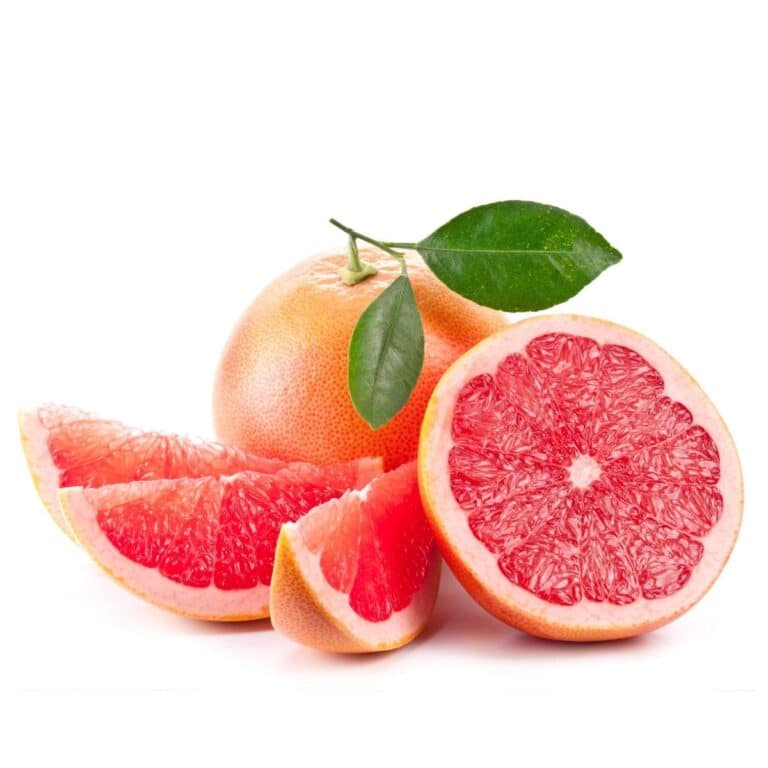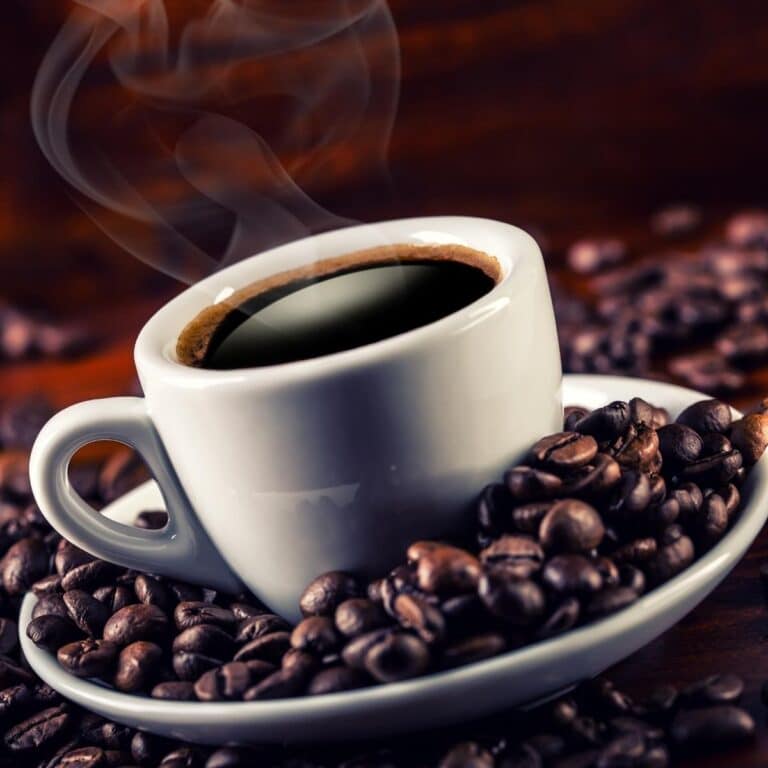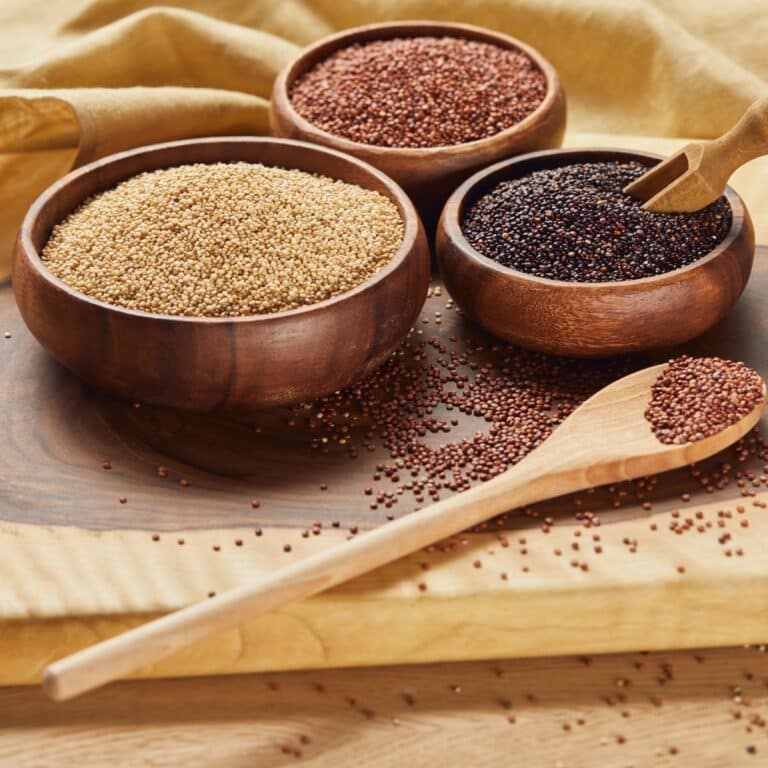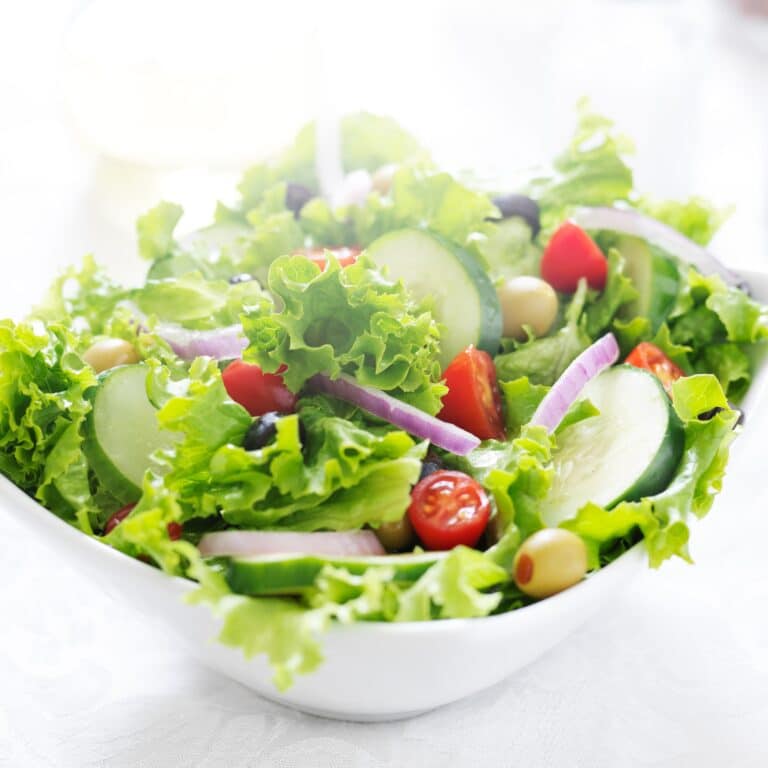Fluid Restricted Diet Menu
Living with chronic kidney disease (CKD) can come with many challenges. For some, these challenges include navigating fluid restrictions. Not every kidney disease patient has to restrict their fluid intake, but many who are reaching end-stage renal disease (ESRD or kidney failure) will have to monitor and restrict the amount of fluid they put into their body.
Fluid restrictions can be one of the more difficult challenges faced with chronic kidney disease. Not only do you have to deal with yet another strict dietary restriction, but you start to realize how much fluid is in everything. You don’t just have to limit the amount of beverages you can drink per day, but you must include the amount of fluid in the foods you eat as well.
Navigating fluid restrictions can feel overwhelming and very difficult. There are some techniques you can use to make it a little easier on yourself, however. There are even little tricks that can help you combat thirst and dry mouth so that you are not so uncomfortable and overwhelmed with this important dietary restriction.

This article will arm you with practical strategies to ease their adherence, identify high-water content foods and offer thirst-quenching alternatives that fit into a kidney-friendly diet.
Let's dive in and simplify this crucial aspect of managing conditions like Chronic Kidney Disease together.
Jump to:
- Key Takeaways
- Understanding the Basics of Fluid Restrictions
- The Crucial Role of Fluid Restrictions in CKD Management
- Essential Tips and Tricks for Managing Fluid Intake
- Techniques to Alleviate Thirst and Dry Mouth
- Strategies to Simplify Adherence to Fluid Restrictions
- Identifying Foods That Contribute to Fluid Intake
- High-Water Content Fruits and Vegetables: What to Know
- Practical Advice for Quenching Thirst With a Kidney-Friendly Diet
- Sample Fluid Intake Plan
- Frequently Asked Questions
- Navigating Fluid Restrictions Isn’t Easy – But It’s Doable!
Key Takeaways
- Understanding fluid restrictions is important for end-stage renal disease patients to prevent complications such as high blood pressure and swelling.
- Following fluid restrictions helps prevent shortness of breath and swelling and supports kidney function and overall health.
- Avoiding salty foods, drinking cold beverages, and consuming fluids in smaller portions can make fluid restrictions easier to manage.
- Seeking support from healthcare professionals and exploring additional resources can assist in navigating fluid restrictions.
For More Recipes and Ideas --->> Get Your Free Meals and Recipes That Are Perfect for Pre-Dialysis Diets, Pre-Dialysis with Diabetes, or Dialysis Diets.
Understanding the Basics of Fluid Restrictions
Fluid restrictions are essential for individuals in the later stages of chronic kidney disease due to the compromised ability of the kidneys to properly filter and excrete excess fluids.
As CKD progresses, the kidneys' filtration function significantly declines, leading to fluid retention, electrolyte imbalances, and elevated blood pressure. Implementing fluid restrictive diet assists in mitigating these complications and maintain the delicate balance of bodily fluids.
Excessive fluid intake can strain the already weakened kidneys, contributing to edema, hypertension, and cardiac overload. Fluid buildup can also disrupt the body's electrolyte equilibrium, causing dangerous imbalances that affect nerve and muscle function.
By limiting fluid intake, individuals can avoid exacerbating these issues and reduce the risk of complications like congestive heart failure and pulmonary edema.
Ultimately, fluid restrictions in later-stage CKD promote overall health and quality of life. Healthcare professionals tailor fluid allowances to individual patients' needs, considering factors such as urine output, residual kidney function, and comorbidities.
Educating patients about the importance of adhering to fluid restrictions empowers them to actively participate in managing their condition and minimizing the progression of kidney-related complications.

The Crucial Role of Fluid Restrictions in CKD Management
Fluid overload is a critical concern for Chronic Kidney Disease patients due to their impaired kidney function. These patients are unable to effectively filter and eliminate excess fluids and waste products from their bodies. Consequently, failure to adhere to fluid restrictions can lead to a range of complications.
Firstly, excessive fluid accumulation can strain the cardiovascular system, leading to hypertension and worsening heart conditions. This increases the risk of heart failure and cardiac arrhythmias.
Secondly, fluid overload can cause pulmonary edema, a condition where fluid accumulates in the lungs, leading to breathing difficulties and decreased oxygen exchange.
Additionally, edema in the extremities and other parts of the body can result in discomfort, reduced mobility, and increased susceptibility to skin infections.
Furthermore, fluid overload can disrupt electrolyte balance, causing abnormal levels of sodium, potassium, and other essential ions. This can lead to muscle weakness, nerve dysfunction, and potentially life-threatening electrolyte imbalances.
Additionally, fluid overload can negatively impact the effectiveness of medications by diluting their concentrations in the bloodstream.
Given these potential complications, adhering to prescribed fluid restrictions is vital for CKD patients. Monitoring and controlling fluid intake can mitigate the risk of cardiovascular strain, respiratory issues, electrolyte imbalances, and other associated complications, thus promoting better overall health and quality of life.
Essential Tips and Tricks for Managing Fluid Intake
It's crucial to know some handy tips and tricks for managing your water intake, especially if you're dealing with kidney-related health issues. Understanding how to handle fluid restriction challenges effectively makes a huge difference in maintaining your health.
Start by keeping track of your fluid intake daily. Fluid intake tracking is not just about the amount of water you drink, but also includes fluids from other beverages and even food. Use a diary or an app to help log in this information accurately.
Next, let's tackle managing thirst cravings. One effective tip for hydration is drinking smaller amounts more frequently instead of gulping down large quantities at once.
Also, try sucking on ice chips or eating juicy fruits like watermelon and oranges that naturally hydrate without overloading on fluids.
Staying motivated with fluid restrictions can be tough at times, but remember why it's essential - it keeps complications at bay and supports your overall kidney health. Joining support groups or forums where others share their experiences can provide reassurance that you're not alone in this journey.

Techniques to Alleviate Thirst and Dry Mouth
Dealing with dry mouth and excessive thirst can be challenging, but there are techniques that can help alleviate these symptoms. Managing fluid intake is particularly crucial if you're a kidney disease patient. So, let's focus on some practical strategies:
- Avoid Salty Foods: Aside from the obvious dangers of sodium with chronic kidney disease, salty foods can be quite detrimental to your fluid restrictions. Avoiding salty foods can help you to not feel so thirsty.
- Mint: Sucking on a little fresh mint leaf can help to freshen your mouth, helping it to relieve dry mouth discomfort.
- Ice Cold: Whenever you do drink your liquids, drink them as cold as possible. Extra cold water and other beverages are more refreshing and the coldness can help to “trick” your brain.
- Frozen Treats: As a refreshing snack, you can freeze grapes, berries, or other fruits. They make a delicious and refreshing snack that can help relieve dry mouth.
- Keep It Small: Fluids, whether they are liquids you drink or the foods you eat with a high liquid content, can go a long way if you keep them small. For example, drinking your allotted fluids out of a small glass or taking small sips of water can make you feel like you’re drinking more rather than disappoint you.
- Blood Sugar: If you have diabetes along with kidney disease, which is common, keeping your blood sugar levels stable can help you with thirst. Unstable blood sugar can make you feel thirsty.
- Mouth Rinse: If you are struggling with dry mouth, there are sprays and mouth rinses that you can try to combat this issue. You can find them in drug stores just about everywhere.
Remember, don't hesitate to discuss these hydration strategies with your healthcare provider; they can provide valuable guidance tailored to your specific needs.
Also, understanding which foods contribute most to your daily fluid intake will assist in managing this aspect of kidney disease successfully.
With persistence and proper management, overcoming the challenges of excessive thirst and dry mouth is entirely possible!
Strategies to Simplify Adherence to Fluid Restrictions
There are several strategies that can make adhering to your liquid limits simpler and more manageable. By focusing on meal planning, you can ensure a balance between nutrition and fluid intake. Renal diet resources are invaluable tools in this process, offering a wealth of recipes designed with your health in mind.
When grocery shopping, it's imperative to read labels carefully. Many foods contain hidden fluids that can sneakily increase your intake. Armed with tips from healthcare providers, navigating the aisles becomes less daunting.
Your healthcare provider is also there for guidance beyond the supermarket. Regular appointments allow for active monitoring of your fluid intake, catching any potential issues early before they escalate into larger problems. They'll provide tailored advice based on your unique needs and lifestyle.
Remember to keep track of the fluids you consume throughout the day. A logbook that serves as a food and fluid journal or smartphone app can simplify this task, making it easy to stay within your prescribed limit.
Identifying Foods That Contribute to Fluid Intake
Renal patients adhering to fluid restrictions should be cautious about foods with high amounts of water that can contribute to their fluid intake. Some foods with significant fluid content to be mindful of include:
- Fruits: Water-rich fruits like watermelon, oranges, grapes, and berries have extra water content. While they offer essential nutrients, controlling portion sizes is crucial.
- Vegetables: Cucumbers, lettuce, celery, and zucchini are vegetables with high water content. Opt for cooked or grilled versions to reduce fluid intake.
- Soups and Broths: These are hydrating but can contribute to fluid overload. Choose low-sodium or reduced-liquid options and limit intake.
- Dairy Products: Milk, yogurt, and even some cheeses contain water. Choose lower-fat dairy and consume in moderation.
- Frozen Treats: Ice cream, popsicles, and gelato have a bunch of water content due to their icy nature. Consume these sparingly.
- Jell-O and Puddings: These desserts have significant water content. Opt for small portions and consider homemade versions with controlled ingredients.
- Clear Juices: Fruit juices can contribute to fluid intake. Choose clear versions and monitor portions.
- Sauces and Gravies: These can contain water, especially if they are thin or runny. Moreover, they can also have high salt content which can contribute to fluid retention. Use them sparingly or thicken with low-fluid alternatives.
By staying mindful of the water content in these foods and managing portion sizes, renal patients can better regulate their fluid intake and support their overall kidney health.
High-Water Content Fruits and Vegetables: What to Know
For individuals with renal concerns and fluid restrictions, it's crucial to approach high-water content fruits and vegetables thoughtfully.
While fruits like watermelon, oranges, grapes, and berries provide valuable vitamins, minerals, and hydration, their fluid content necessitates portion control. Enjoying these fruits in limited amounts can help prevent excessive fluid intake.
Likewise, vegetables such as cucumbers, lettuce, celery, and zucchini are hydrating choices, but selecting cooked or grilled options can help manage fluid consumption more effectively.
While these foods offer nutritional benefits, moderation is key to avoid surpassing fluid limits. Consulting a registered dietitian who specializes in renal nutrition is highly recommended. They can tailor a dietary plan that includes appropriate servings of high-water content produce while staying within prescribed fluid restrictions.
By striking a balance between these foods' health benefits and fluid control, individuals can better manage their renal health and overall well-being. Remember, personalized guidance is essential to ensure that dietary choices align with individual health needs.
Practical Advice for Quenching Thirst With a Kidney-Friendly Diet
Maintaining proper hydration is crucial for renal patients, but it's equally important to avoid fluid overload. Optimal beverage choices can help strike this balance.
Plain water is the top choice, as it provides hydration without adding extra sodium or other compounds that can strain the kidneys. Herbal teas and decaffeinated beverages are also suitable, offering variety and minimal impact on fluid levels.
However, certain beverages should be limited or avoided. High-sugar drinks like regular soda and fruit juices can increase calorie and sugar intake, potentially impacting weight and blood sugar levels.
Additionally, caffeinated beverages like coffee and energy drinks can act as diuretics, promoting fluid loss, and should be consumed in moderation. Alcoholic drinks can disrupt fluid balance and strain the kidneys, so they should be limited or avoided, as well.
Cooperating with a dietitian is essential to tailor fluid intake to individual needs and restrictions. Monitoring fluid levels and collaborating with healthcare professionals can help renal patients maintain adequate hydration without overwhelming the kidneys.
By making informed beverage choices and heeding medical guidance, renal patients can prioritize hydration and kidney health.
Sample Fluid Intake Plan
- Upon Waking: Start the day with 1 small glass (approximately 6 ounces) of water to kickstart hydration.
- Breakfast: Have a cup of herbal tea (unsweetened) with breakfast. This counts towards fluid intake.
- Mid-Morning: Enjoy another small glass of water (6 ounces) or a small cup of water-based low-sodium soup as a hydrating snack.
- Lunch: Pair lunch with a cup of herbal tea or water infused with a slice of lemon or cucumber.
- Afternoon Snack: Choose a hydrating snack like water-rich fruits (e.g., watermelon, grapes), consuming them in moderation.
- Dinner: Have a cup of herbal tea or a small glass of water before or during dinner.
- Evening: Wind down with another small glass of water (6 ounces) or herbal tea.
- Throughout the Day: Sip on plain water or herbal tea as needed, staying mindful of fluid limits.
Total Fluid Intake: Aim to stay within your prescribed fluid limit, which can vary depending on your specific medical condition. Typically, fluid restrictions for renal patients can range from around 32 to 48 ounces (950 to 1400 milliliters) per day. Adjust portion sizes and frequency accordingly to adhere to these limits.
Remember, this sample fluid intake plan is a general guideline. Always consult your healthcare provider or a registered dietitian to tailor the plan to your individual fluid restrictions and renal health needs.
Frequently Asked Questions
Common symptoms of fluid overload include swelling in the legs, ankles, or abdomen, rapid weight gain, shortness of breath, increased heart rate, and high blood pressure. Other signs can include fatigue, confusion, and reduced urine output.
These symptoms indicate that the body is retaining excess fluid, often due to compromised kidney function or heart issues. Monitoring these signs is crucial, especially for individuals with conditions like chronic kidney disease or heart failure, as prompt intervention can prevent complications.
Yes, certain medications can impact fluid balance. Diuretics (water pills) increase urine output, affecting fluid levels. ACE inhibitors and ARBs, used for hypertension, can dilate blood vessels, altering fluid and electrolyte balance.
Nonsteroidal anti-inflammatory drugs (NSAIDs) may cause fluid retention. Corticosteroids can lead to sodium and water retention. Some medications affect renal function, impacting fluid regulation.
It's crucial for individuals on such medications, especially those with kidney issues, to be monitored by healthcare providers. Adjustments in medication, fluid intake, and dietary choices might be necessary to maintain proper fluid balance and overall health.
Exercise and physical activity can influence fluid needs by increasing fluid loss through sweat. Sweating helps regulate body temperature but also depletes fluids and electrolytes. Hydration before, during, and after exercise is crucial to maintain performance and prevent dehydration.
The type, intensity, and duration of activity affect fluid requirements. It's essential to balance fluid intake with losses to avoid both dehydration and overhydration. Tailoring fluid intake based on activity level and environmental conditions is key to sustaining optimal hydration and overall well-being.
Yes, weather and climate significantly impact fluid intake needs. In hot and humid conditions, increased sweating leads to higher fluid loss, elevating the risk of dehydration. Dry climates can also accelerate fluid evaporation.
Cold weather might reduce thirst perception, leading to insufficient fluid intake. High-altitude environments can cause more rapid breathing, increasing moisture loss. To account for these factors, adjusting fluid intake based on the temperature, humidity, and activity level is essential.
Monitoring urine color and frequency can help gauge hydration status. Adapting fluid intake to the specific weather conditions helps maintain proper hydration and overall health.
Yes, psychological factors like stress and anxiety can increase thirst or fluid intake. The body's "fight or flight" response triggered by stress can lead to increased heart rate and breathing, resulting in higher water loss through respiration and sweating. Anxiety can also cause dry mouth and a sensation of thirst.
Some individuals may cope with stress by consuming more fluids. However, others might experience decreased appetite and reduced fluid intake. Balancing psychological well-being is important, as managing stress and anxiety positively impacts overall health, including hydration levels.
Navigating Fluid Restrictions Isn’t Easy – But It’s Doable!
Understanding fluid restrictions is vital for individuals with chronic kidney disease to manage their health effectively. Fluid restrictions help mitigate complications associated with compromised kidney function, such as fluid retention and electrolyte imbalances.
Excess fluid intake strains weakened kidneys, leading to edema, hypertension, and cardiac overload. Additionally, fluid buildup disrupts electrolyte equilibrium, affecting muscle and nerve function.
Adhering to restrictions reduces the risk of heart failure, pulmonary edema, and dangerous electrolyte imbalances. Practical tips for managing fluid intake, alleviating thirst, and simplifying adherence aid individuals in maintaining their well-being.
Identifying foods contributing to fluid intake and making balanced beverage choices is essential. Psychological factors, exercise, climate, and medications also impact fluid balance. Overall, educating patients, consulting healthcare providers, and adhering to personalized fluid plans empower individuals to actively manage their kidney health and improve their quality of life.


